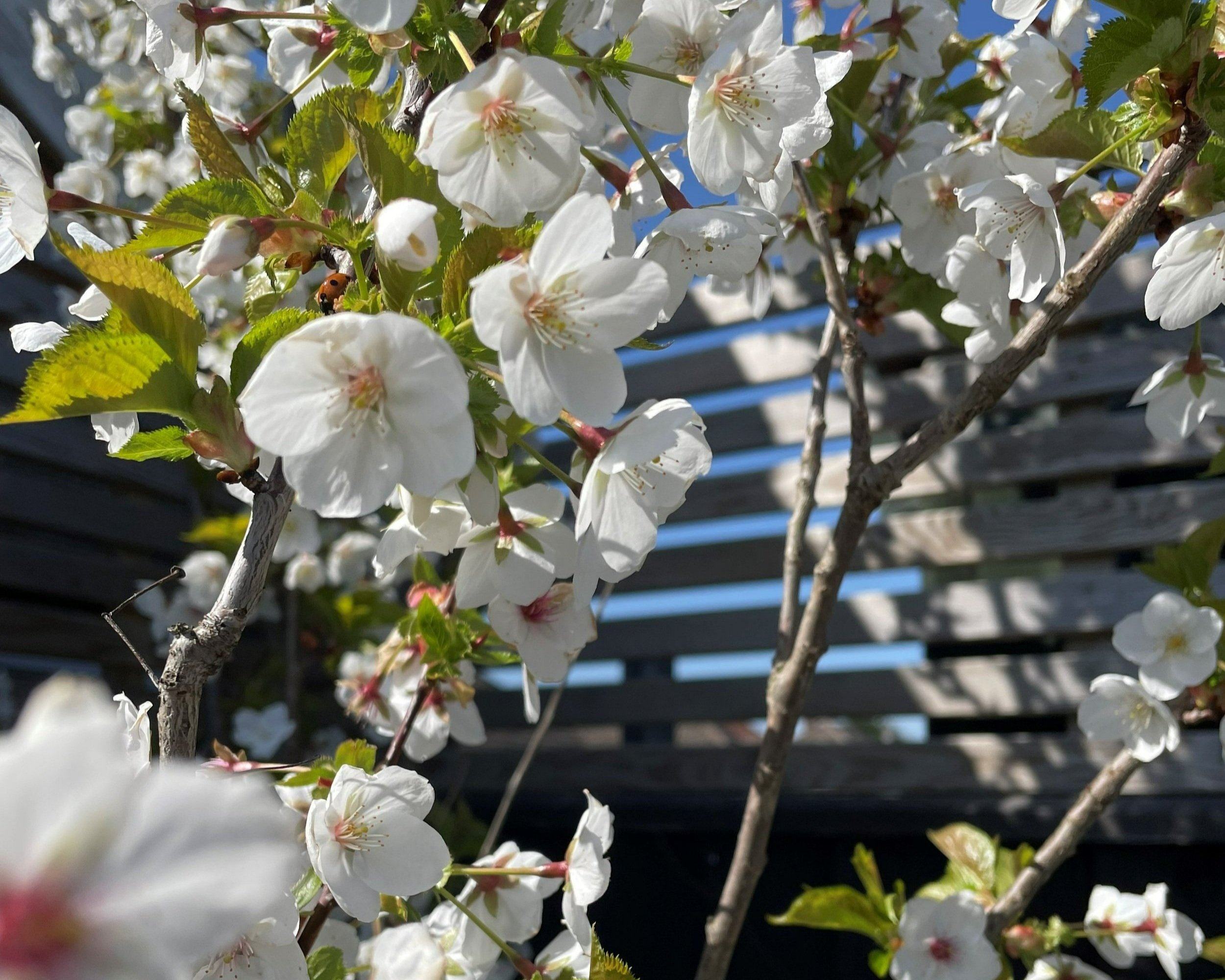April’s Gardening Jobs
Cherry tree blossom shining in April sunshine
April is such an exciting month in the garden, the temperatures are (usually) starting to rise, the days are getting longer and there’s so much anticipation as Spring gets in full swing. It’s a great time to start getting out in the garden and have a wander round your space, taking a mental note of any changes you’d like to make for the year to come. Whilst you’re out there, here are a few jobs you can do:
Plant out young perennials
When you’re looking to buy plants, bigger is not necessarily better. Small plants will quickly fill out and are likely to acclimatise quicker to your garden than more developed plants. Once you’ve planted your new addition, water the plant in well and mulch around the area to help keep weed free and retain moisture. Ensure you keep an eye on the weather and give it a water in dry periods for the first year until plant is well established.
Check rose shoots for aphids
Gently rub off aphids by hand if you spot them, being careful not to damage the new shoots. Alternatively, if the idea of squishing aphids is not your thing, blast them with some water being careful not to go too hard as your rose won’t thank you for it. Do remember not to worry too much, though – your garden has its own ecosystem and everything fits into that. I often start the year with loads of aphids on my roses and they always manage to put on a beautiful show regardless. In my own garden, I find the ecosystem fascinating especially when it comes to aphids. I have quite a lot of ants in the garden, which aren’t usually too much of an issue but did you know they farm aphids? Aphids excrete a sweet, sticky substance which ants love so they protect them from predators to be able to feed on the honeydew substance. I’ve often seen them fight off ladybirds to protect the ants which is a pain but absolutely fascinating.
Deadhead daffodils
This is a nice, easy job you can do as you walk past your pots and borders and barely takes any time at all. Simply pinch or snip the flowers off your daffodils when they’re past their best to ensure their energy goes back into the bulb ready for next year rather than into creating seeds.
Cutback and give up on those hebes
This is a very personal one to me, after recently investing in variegated hebes for my garden, the hard frosts of December last year screwed them over. A lot of plants had a tough year last year, from the insane highs of the summer heat, they then had a warm Autumn, only to be plunged into a week long hard frost with the temperatures well below freezing. I think that frost came at quite a vulnerable time for a lot of plants and they simply weren’t prepared for it. There are many casualties out there, not just hebes, of plants that have been long established in gardens that took the hit. So we move forward, we cut them back or get rid of them altogether and get excited about having a good excuse to take a trip to your local garden centre to find a replacement.
Harvest rhubarb
I love a bit of rhubarb at this time of year and they’re such low effort edible plants which reward you with a high yield that looks attractive and delivers year after year. When harvesting, ensure to twist stems off from the base and remove the leaves before taking the stems inside as the leaves are poisonous. This is a trick I remember my Grandma teaching me when I was young which was always the rule – don’t cut the stems from the base and don’t bring the leaves into the kitchen. Store the stems in your fridge or freezer and enjoy in crumbles or in a rhubarb gin cocktail on a mild April evening.

